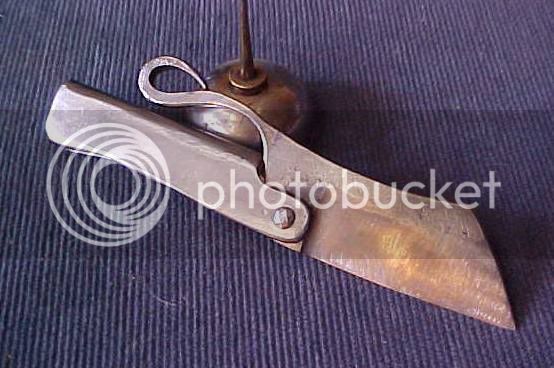RickD, very well cut file work on those, except your pattern is running backwards. The little pointed tips will drag when the blade is used for penetration.
To anneal a file:
To get it soft enough to work with, drill, ect. just heat red-orange and let cool. To do a better job, heat red-orange, and quickly put in a bucket of vermiculite, and let cool to room temp. It is cheap and available at any place that deals in plants, flowers, ect. Be careful in your choice of files. Nicholson, Simmons, are good. Nicholson's are basicly W-2, containing a touch of tungston, most good files are W-1, or W-2. W-1 is a just a better grade of 1095. A tad more carbon. W-2 will give you a slightly superior edge. Those mentioned are the only two I fully trust. If you do not recognize the maker, don't risk using it. There are some files that are mild steel, case hardened. No good for a knife. To heat treat in a simple, but adequate manner, heat to red-orange in dim light, then let cool until all glow is gone. Do this at least three times to normalize the steel. This is stress removal, and will grow the grain, make the grain more uniform, and prepare it for the hardening quench. Bring the blade back to red-orange, hold the heat for a minute, or two, without going any hotter, then quench in transmission fluid heated to about 125o, or 130o. File test the edge. A file should not even scratch it, if it got as hard as it should. Put in your kitchen range for three one hour temper heats, which can range from 400o, to 450o, depending on how hard you want the edge to be. Bear in mind, that harder is not always better. Use an oven thermometer. Do not trust your range setting. Let the blade cool to room temp between heats.










